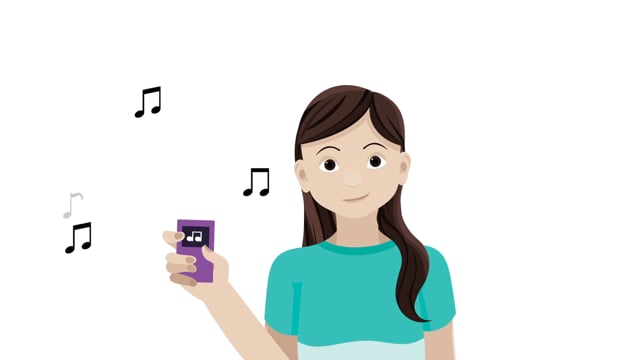Ears
What Are Ears and What Do They Do?
The ear is made up of three different sections that work together to collect sounds and send them to the brain: the outer ear, the middle ear, and the inner ear.

How the Ears Work
The ears gather sounds from our environment and turn them into messages for the brain to decode. Learn more in this video about the ears.
The Outer Ear
The outer ear is made up of the pinna — also called the auricle (OR-ih-kul) — and the ear canal. The pinna is the part of the ear you see on the side of your head and is made of tough cartilage covered by skin. Its main job is to gather sounds and funnel them to the ear canal, which is the pathway that leads to the middle ear. Glands in the skin lining the ear canal produce earwax, which protects the canal by cleaning out dirt and helping to prevent infections.
The Middle Ear
The middle ear is an air-filled cavity that turns sound waves into vibrations and delivers them to the inner ear. The middle ear is separated from the outer ear by the eardrum, or tympanic membrane, a thin piece of tissue stretched tight across the ear canal. Sounds hit the eardrum, causing it to move.
This movement leads to vibrations of three very small bones in the middle ear known as the ossicles (AH-sih-kuls). The ossicles are:
- the malleus (MAH-lee-us) ("hammer"), which is attached to the eardrum
- the incus (IN-kus) ("anvil"), which is attached to the malleus
- the stapes (STAY-peez) ("stirrup"), which is attached to the incus and is the smallest bone in the body
To hear properly, the pressure on both sides of your eardrum must be equal. When you go up or down in elevation, the air pressure changes and you may feel a popping sensation as your ears adjust. Ears adjust thanks to the narrow Eustachian (yoo-STAY-she-en) tube that connects the middle ear to the back of the nose and acts as a sort of pressure valve, so the pressure stays balanced on both sides of the eardrum.
The Inner Ear
The vibrations from the middle ear change into nerve signals in the inner ear. The inner ear includes the cochlea (KOH-klee-uh) and the semicircular canals.The snail-shaped cochlea changes the vibrations from the middle ear into nerve signals. These signals travel to the brain along the cochlear nerve, also known as the auditory nerve.
The semicircular canals look like three tiny, connected tubes. It's their job to help you balance. The canals are filled with fluid and lined with tiny hairs. When your head moves, the fluid in the canals sloshes around, moving the hairs. The hairs send this position information as signals through the vestibular nerve to your brain. The brain interprets these signals and sends messages to the muscles that help keep you balanced.
When you spin around and stop, the reason you feel dizzy is because the fluid in your semicircular canals continues to slosh around for awhile, giving your brain the idea that you're still spinning even when you aren't. When the fluid stops moving, the dizziness goes away.
The cochlear nerve, which is attached to the cochlea and sends sound information to the brain, and the vestibular (veh-STIB-yuh-ler) nerve, which carries balance information from the semicircular canals to the brain, together make up the vestibulocochlear (vess-tib-yuh-lo-KOH-klee-er) nerve.
How Can I Keep My Child's Ears Healthy?
Teach kids not to stick things like cotton swabs and fingernails into ears. Doing so can scratch the ear canal, push earwax deeper into the ear, and even rupture the eardrum. If your child is bothered by earwax, talk to your doctor.
Teach kids to protect their hearing by paying attention to the noise levels they're exposed to. Have them turn down the volume on video games, TVs, and, especially, portable music players. Make sure they take hearing protection (like earplugs or protective earmuffs/headphones) when they'll be around loud noises (at a concert, car race, etc.).
If your child has any trouble hearing, reach out to your doctor. Treating hearing loss early can limit the damage.


